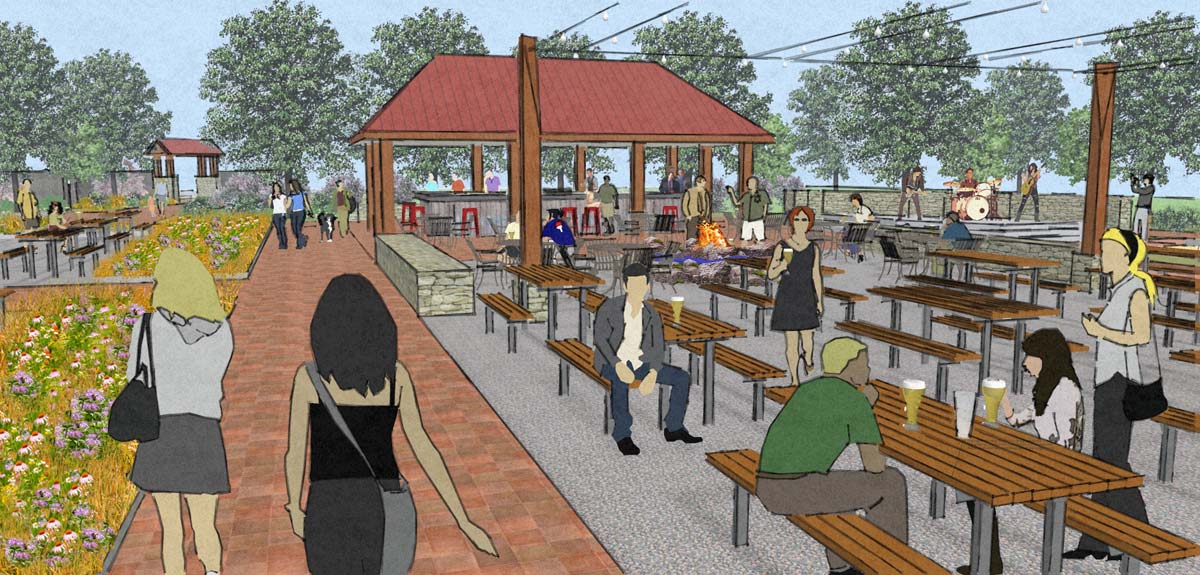Project Description
Devil’s Backbone Brewery
Roseland, Virginia
Located in rural Nelson County, Devil’s Backbone has consistently been voted one of the Country’s best brewpubs based on its gold medal winning beer and location within the foothills of the Blue Ridge Mountains.
A beer garden can be many things, but at its best we think it’s a place that promotes the celebration of great beer, great friends, and life well lived.
We found the existing site was characterized by a number of challenging conditions, including large parking areas, moat-like drainage swales, and cramped landscape and pedestrian areas. Underlying design goals focused on relocating the parking and placing the beer garden at the center of the site, enhancing panoramic views, creating a strong organizational framework, amplifying experiential character, and acknowledging the rich natural and cultural histories of the Blue Ridge Mountains.
The fire cauldron functions as the site’s organizational center, or anchor, and represents the symbolic heart of the beer garden. The building pattern references local farmstead archetypes with structures generally located along the perimeter in simple axial relationships. Garden spaces are placed to reinforce organizational patterns and to provide a unifying and connective spatial fabric. The reconfigured festival lawn embraces both new garden geometries and distant ridgelines before dissolving into parking borders.
Timber framed gates mark the garden entrances and a brick and gravel walkway system invites visitors to walk and explore. Garden character is based on native landscape archetypes, local cultural patterns, and camping heritage. Additional design elements include a spring and stream course, secret woodland gardens and pergolas, garden borders, and a variety of seating and gathering spaces. The planting design strategy is based on using local plant communities (mountain woodlands, riparian edge, upland meadow, and wetlands, etc.) to heighten the natural character in garden areas. The plant pallet was specifically selected to support local insect herbivores and pollinators and to enhance local wildlife diversity.

